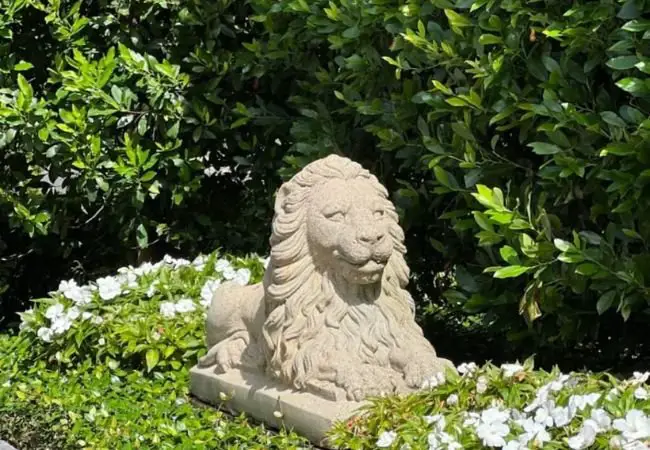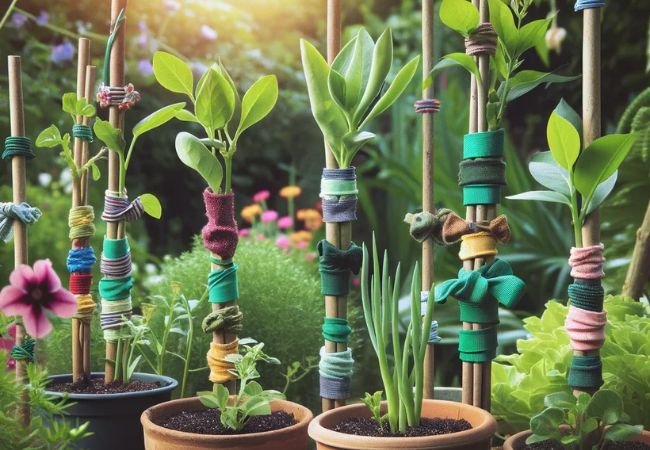Discover how to choose and place outdoor statues to elevate your garden’s aesthetics. Learn about materials, styles, and maintenance from an experienced landscape designer.
Outdoor statues can transform an ordinary garden into a captivating outdoor sanctuary, adding personality, focal points, and artistic flair to your landscape. As a landscape designer with over 20 years of experience, I’ve seen firsthand how the right statue can completely change the atmosphere of an outdoor space. In this guide, I’ll share my expertise to help you select, place, and care for outdoor statues that will enhance your garden’s beauty and character.
Types of Outdoor Statue Materials
1. Stone
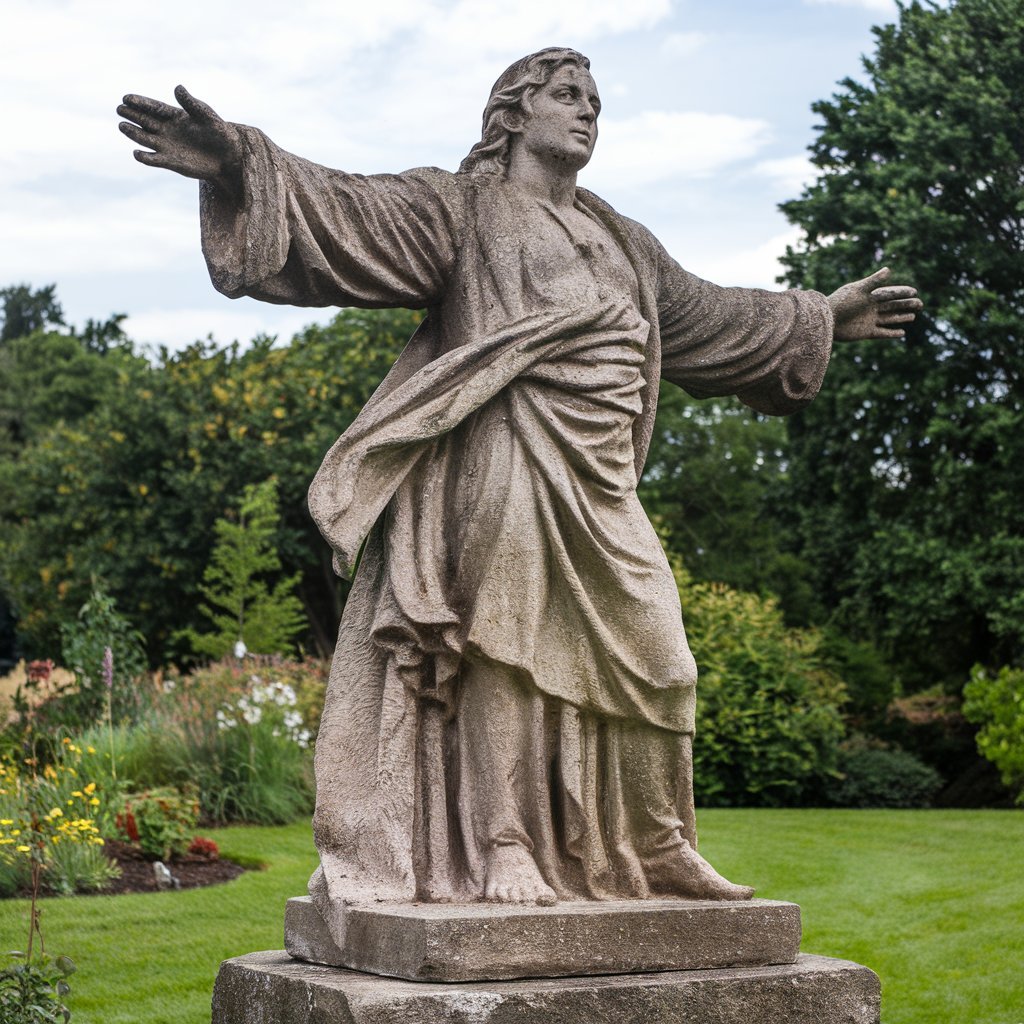
Stone statues are classic choices for outdoor settings, offering durability and a timeless appeal. They weather beautifully over time, developing a patina that adds to their charm.
Pros:
- Extremely durable
- Natural, elegant appearance
- Can withstand various weather conditions
Cons:
- Heavy and difficult to move
- Can be expensive
Expert Tip: For a more affordable option that mimics the look of natural stone, consider cast stone statues. They’re made from a mixture of cement, sand, and aggregate, providing a similar aesthetic at a lower price point.
2. Metal
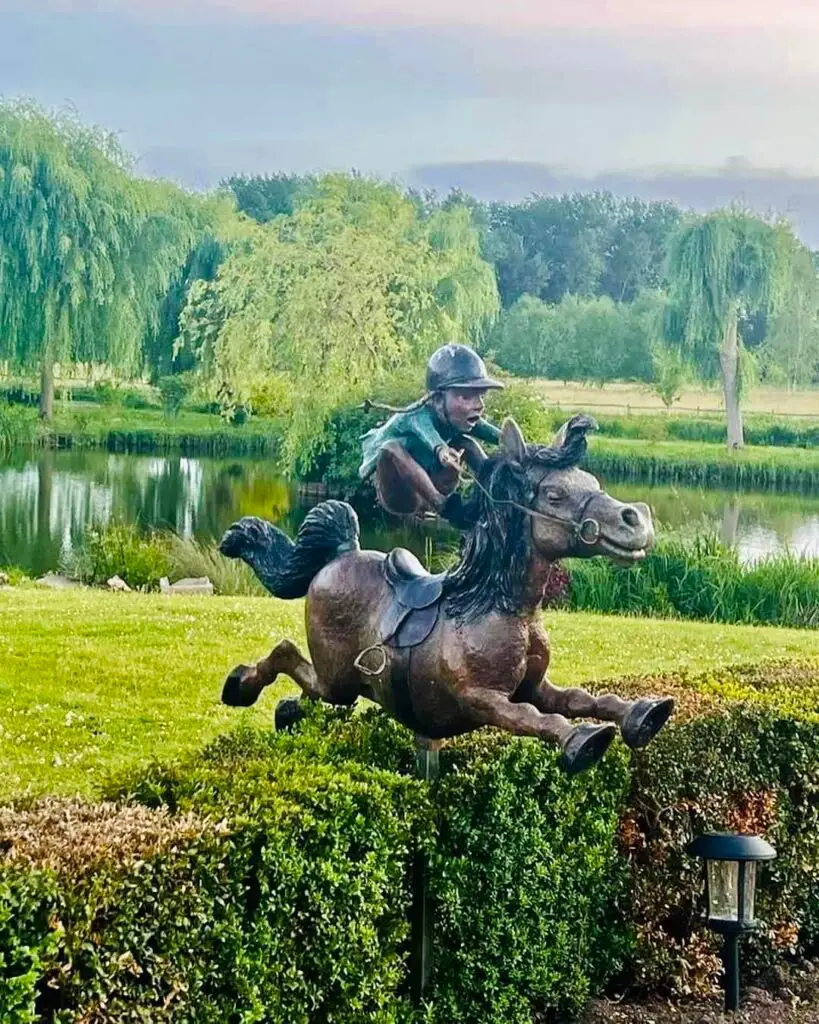
Metal statues, particularly those made of bronze, copper, or stainless steel, can add a contemporary or classical touch to your garden.
Pros:
- Durable and long-lasting
- Can develop beautiful patinas (especially bronze and copper)
- Available in various finishes
Cons:
- Can be expensive, especially for bronze
- May require periodic maintenance to prevent corrosion
Design Insight: I often recommend bronze statues for clients looking for a high-end, timeless look. The patina that develops over time adds character and depth to the piece.
3. Concrete
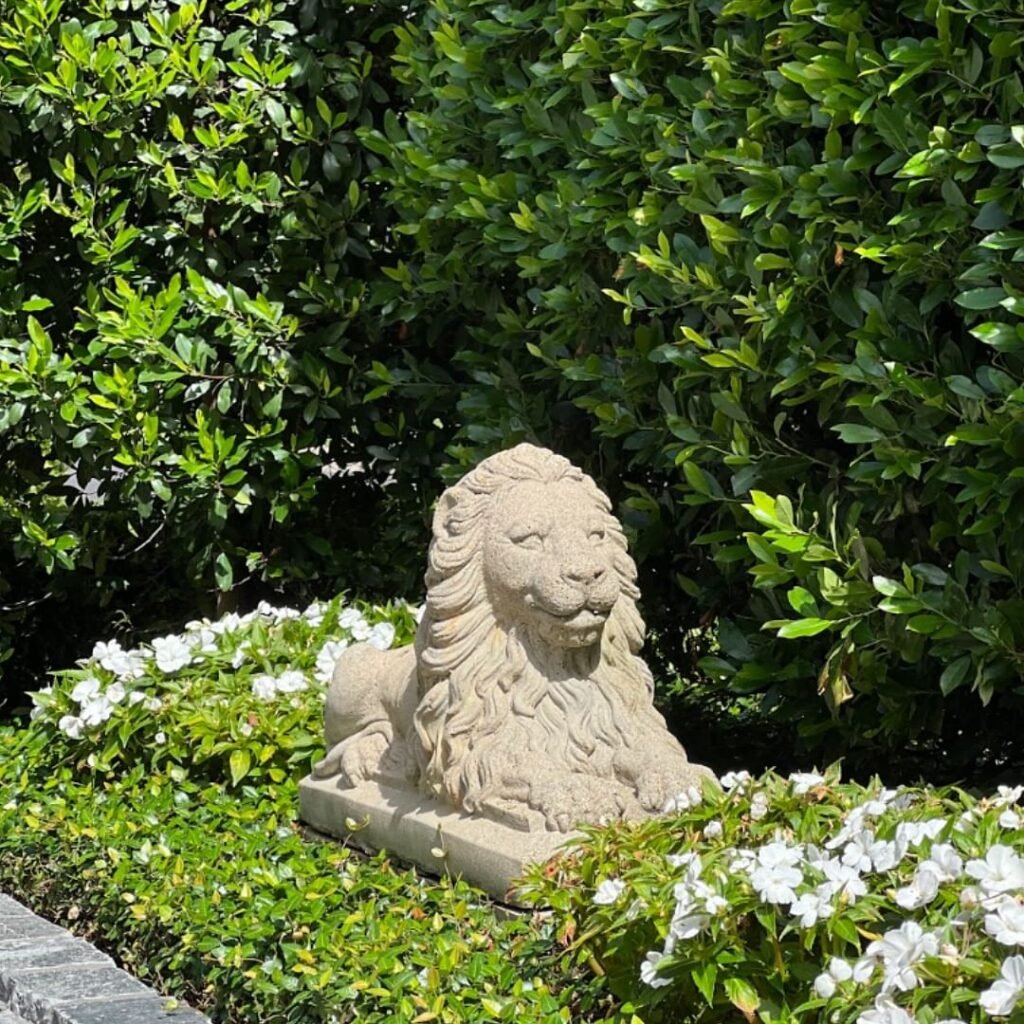
Concrete statues are versatile and can be molded into various shapes and sizes.
Pros:
- Affordable
- Durable
- Can be painted or stained
Cons:
- Can crack in freezing temperatures if not properly cured
- May look less refined than stone or metal
Maintenance Tip: To prevent cracking in cold climates, I advise clients to cover concrete statues or bring them indoors during winter months. The Chicago Botanic Garden offers excellent advice on winterizing garden ornaments.
4. Resin
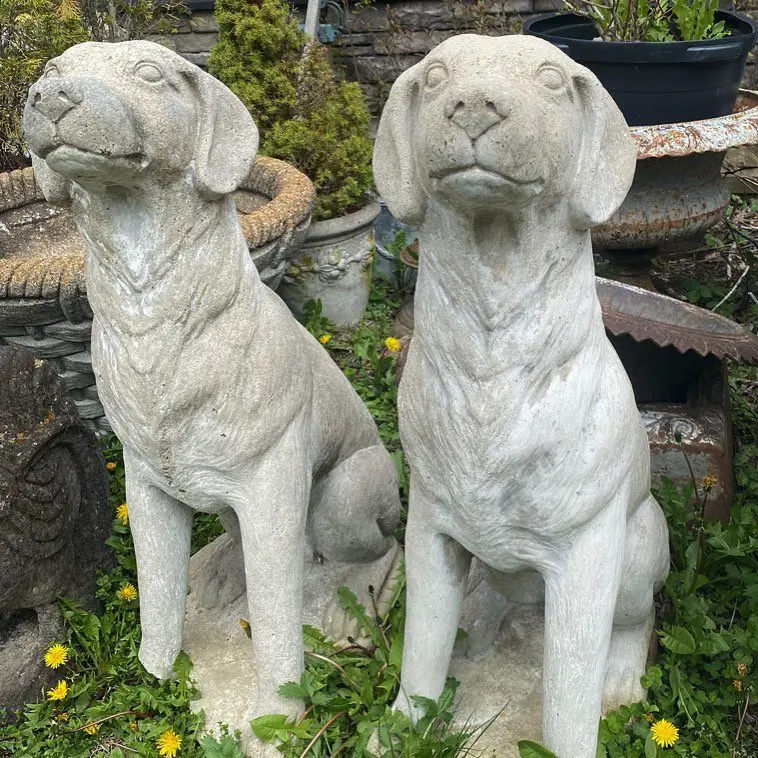
Resin statues are lightweight and often designed to mimic the look of more expensive materials.
Pros:
- Lightweight and easy to move
- Affordable
- Resistant to chipping and cracking
Cons:
- May fade or degrade in direct sunlight
- Can look less authentic than natural materials
Pro Tip: When choosing resin statues, look for those with UV-resistant finishes to prevent fading and extend their lifespan.
Choosing the Right Style
The style of your statue should complement your garden’s overall design. Here are some popular options:
- Classical: Think Greek and Roman-inspired figures
- Modern: Abstract or minimalist designs
- Whimsical: Playful animal figures or fairy garden statues
- Asian-inspired: Buddha statues or pagoda lanterns
Expert Advice: Consider the scale of your garden when choosing a statue. A large, imposing piece can overwhelm a small space, while a tiny statue might get lost in a expansive landscape.
Placement Tips
Where you place your statue can dramatically impact its effect on your garden. Here are some guidelines I follow:
- Use statues as focal points at the end of pathways or in garden corners
- Place them near water features for reflection and ambiance
- Consider the statue’s orientation in relation to sunlight for optimal viewing
- Ensure the statue is visible from key viewing areas (e.g., patio, windows)
Design Secret: I often use the “rule of thirds” when placing statues. Imagine your garden divided into a 3×3 grid – placing statues at the intersection points of these lines creates a visually pleasing composition.
Maintenance and Care
Proper care will ensure your outdoor statue remains beautiful for years to come:
- Clean regularly with a soft brush and mild soap
- Apply a sealant appropriate for the statue’s material
- Check for cracks or damage annually, especially after winter
- Consider covering or moving statues indoors during harsh weather
Preservation Tip: For metal statues, I recommend applying a clear wax coating annually to protect the finish and enhance the natural patina. The Smithsonian’s Gardens offer excellent resources on caring for outdoor art and sculptures.
Outdoor statues are more than just decorative elements; they’re expressions of personal style that can elevate your garden’s aesthetic and create memorable focal points. By carefully considering material, style, placement, and maintenance, you can select a statue that will bring joy and character to your outdoor space for years to come. Remember, the perfect statue not only complements your garden but also reflects your personality and enhances your connection to your outdoor sanctuary.
For more gardening tips and plant care guides, visit usagardenhub.com.

